A scientific case for an Earth alive
"Becoming Earth" author Ferris Jabr on his new book and how life emerged as an extension of the planet’s surface.
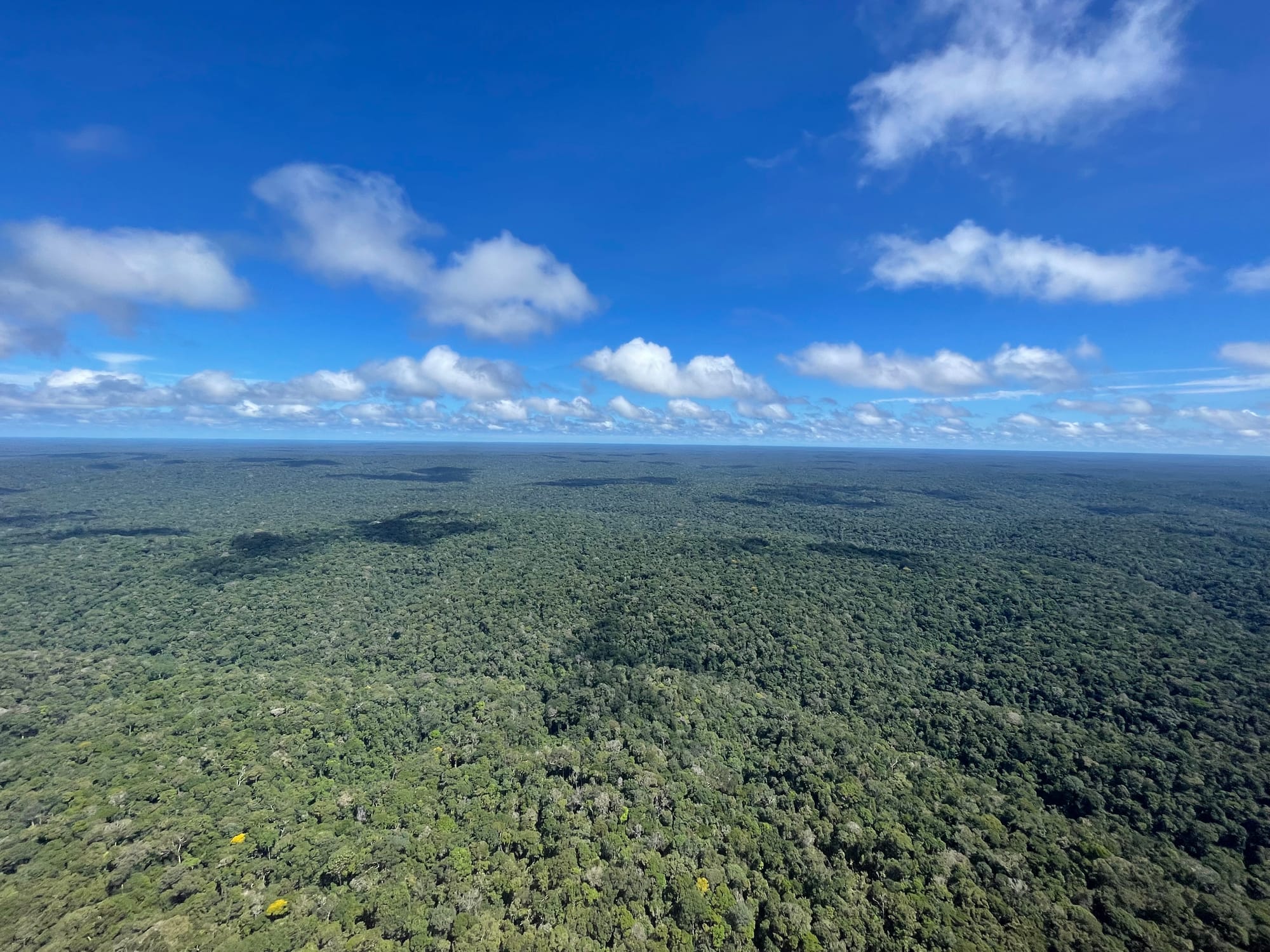
Ferris Jabr’s sense of the world changed when he learned about rain in the Amazon. It’s no surprise that rain and the world’s most voluminous river feeds the world’s largest tropical rainforest. But Jabr, a science journalist, was struck by how this sorta … missed the point.
It’s backwards. Rather than a jungle springing up in a wet climate, the Amazon generates the rain itself. This is so-called “evapotranspiration” where trees and plants silently pump excess water into the atmosphere — up to 20 billion tons per day. But Jabr’s real surprise came in learning that even evapotranspiration wasn’t the whole story. All the Amazon’s lifeforms were involved.
“The pollen, the fungi, the microbes, all these tiny particles, and gasses and volatile compounds,” contribute to the conditions for rain, Jabr said. “That sparked this curiosity in me: how else is life dramatically changing its environment?”
10 years ago, energized by this question, Jabr pitched a book that would eventually take him from an ancient tundra in Siberia to fast-growing marine forests in California, his own garden in Oregon, and eventually back to the Amazon.
Every locale opened Jabr’s eyes to a planet that he describes as literally alive.
“The living entity we call Earth is in effect a highly complex balancing act sustained by the reciprocal evolution of organisms and their environments,” Jabr writes in his new book, Becoming Earth: How Our Planet Came to Life (June 25). His years of reporting for the book was supported in large part by the Whiting Foundation Creative Nonfiction Grant and the MIT Knight School of Journalism Fellowship.
I recently spoke with Jabr about the book’s big ideas, little adventures, and overall process.

Support your community bookstore buy purchasing from Bookshop
How did that initial lesson from the rainforest change your approach to this subject?
The Amazon essentially spans a continent so the way it changes weather has global consequences. I quickly discovered that there are many, many other examples of life dramatically changing the planet since life originated. In fact, it is responsible for many of the planet’s defining features.
That was not the life science I'd been taught in high school or even college! I've always been taught that life is subject to its environment, not the other way around.
You traveled to many fascinating places for the book, like the giant tundra conversion experiment in Siberia’s Pleistocene Park (the experimental nature park seeking to re-create the northern subarctic steppe grassland ecosystem) and the 1066-foot Amazon Tall Tower Observatory in Brazil (used to unpack how the forest, atmosphere, and climate interact). How did you deal with climbing the Tall Tower?
You get there and it's really shocking how barebones it feels. This is not a fully enclosed structure with a safety barrier or safety net. You have to be harnessed onto this rail in case you do slip through one of the gaps. You have to go through the safety procedures, you have to make sure you're not afraid of heights or paralyzed by fear, which has happened.
I would have been mortified.
I was nervous, but I found it really exciting. You get to see the forest at every possible level. The higher you go, the more you start to see the Amazon as this intricate, interconnected living fabric, as opposed to when you're on the ground and just completely overwhelmed by the density of life around you. And then eventually, at the top, you're halfway between the Amazon canopy and the clouds. Depending on what time of day you’re there, you can see things happening like moisture coming off of the forest and clouds starting to form, and clouds thickening, and eventually getting large and heavy enough that they burst in precipitation. That cycle just keeps going and going.
It was a really exhilarating experience. Scientists from all over the world come to this facility, because it is so unique: chemists, biologists, ecologists, all kinds.
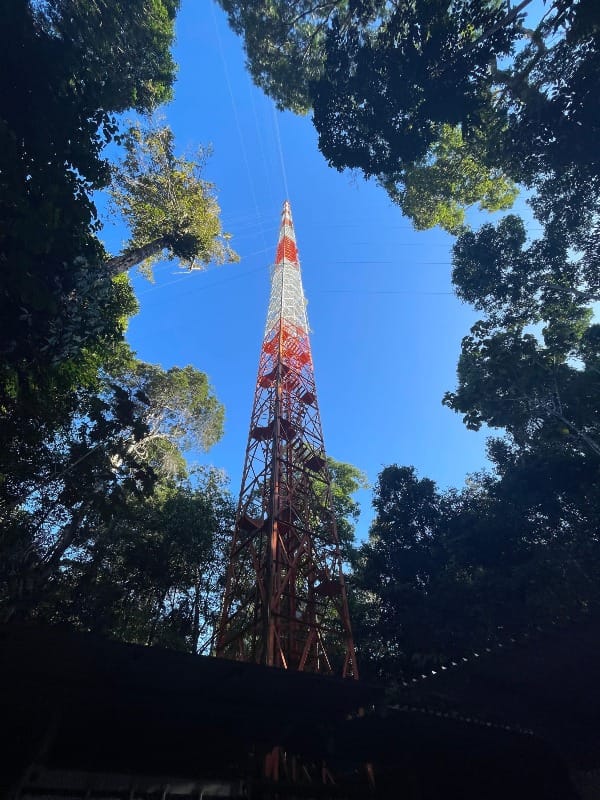
You took that trip in 2022, three years after signing your book deal, pretty late in your book-writing process considering how much the Amazon inspired your book, as you write in the introduction. How did it influence your perspective at that late stage?
Had I gone there immediately after starting the book project, I think my perspective would have been too similar to what I was already writing in the introduction. Going there later became a really nice culmination. It was reinforcing for me a lot of what I was learning.
I'm standing there, more than 1000 feet above the Amazon, I could now physically see it in front of me: I now understand that the blue sky, the O2-rich breathable atmosphere, the clouds, the accelerated water cycle, the soils from which all the plants are growing — all of this is a product of life.
I don't think I could have appreciated it to quite the same depth had I gone there too early.
Let’s talk more about that. How did your personal understanding of life change?
I no longer think of life as inhabiting the planet or residing on the planet. I now think of life being an extension of the planet. And I mean that literally — it is a literal, physical extension of Earth.
I like to make the analogy to a vast beach, from which spontaneously emerge various sand castles or intricate sculptures. Just because they have a new level of organization and complexity doesn't mean they're suddenly divorced from the beach from which they emerge. They're still made of the same particles of sand that surround them. I think it's the same with life and Earth. Life literally emerged from Earth and sometimes in evolutionary biology there's a tendency to forget that — to focus on genetics and reproduction, and organisms as they are right now. But that all had to begin before Darwinian evolution was in place. So I see our species and all living things as literally continuous with Planet Earth.
I no longer think of life as inhabiting the planet or residing on the planet. I now think of life being an extension of the planet. And I mean that literally — it is a literal, physical extension of Earth.
You write a lot about gardening in the book and you describe soil as a sort of microcosm of our planet. How did gardening intertwine with your work on this book?
Gardening kind of organically became a very important part of my life. And I didn't initially plan to structure the soil chapter around this gardening narrative. But I wanted a more relatable chapter. So many of these chapters are in these far flung locales, with these very daring scientists doing things that most of us will never get to do or experience. We all have some degree of familiarity with soil and the basic concept of growing plants.
We're seeing this change in the way that scientists define and view soil not just as a substance or a medium that supports life, but as a living network or system in its own right. It is this complex system of the animate and the inanimate, all jumbled together. And it has a capacity to maintain and regulate itself and. So, literally getting into the dirt, was pretty revelatory for me.
As I started reading that, I felt a little embarrassed when I realized that I didn’t know really what soil really is. Is that a common reaction?
For people who are obsessed with gardening, I think it is very common to see soil as a living community. But for people more like me in the beginning, for whom gardening was a hobby — we don't know. We're thinking more about: Where do I get good soil from? How do I make the soil better? It’s more about improving the condition of the soil rather than nurturing it as though it were alive.
You quote someone in the book as describing life as something like Earth “grown tall.” That stuck with me.
Yes, it was Gregory Retallack, who is one of the foremost experts on the origin evolution of soils. His whole philosophy is that “life is soil grown tall.” He sees soil as a form of "protolife" and a starter system for life. He thinks of complex organisms as developing from soil. That’s the physical extension.
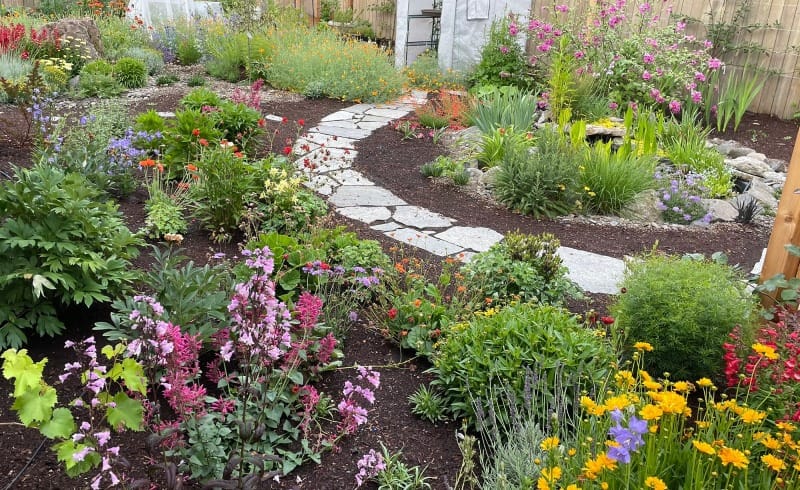
Did you come away from this book feeling that our planet is more “fragile” or less so?
There's an interesting and at times perplexing multiplicity to the Earth system and really any complex living system. They are simultaneously vulnerable to disruption because they have so many moving parts, and if just one thing goes wrong in the wrong way, it can lead to catastrophic consequences.
If you perturb one variable you unleash a cascade of unintended consequences. But at the same time, the Earth system displays an astonishing resilience. It is not the kind of resilience that is going to save us, or that we can just lean on. But it is there.
It's a kind of resilience that is difficult for us to comprehend properly. It isn't particularly relevant to any species or civilization because it operates on a much longer time scale. So we always have to come back to that question: how has the Earth remained alive for more than 4 billion years? That is a lot of time for something to go extremely wrong to the point of completely annihilating all life on the planet. Earth has been through five major mass extinctions, and yet has managed to flourish and arguably, to get increasingly biodiverse and increasingly complex over time.
That doesn't seem like luck or chance to me, and I think earth science is still grappling to fully explain what underlies that resilience.
So what’s a potential answer to that?
Some earth scientists would adopt the perspective that it is mostly luck that life evolved on Earth and has somehow managed to hang on for all of this time.
For me, a huge part of the answer is this intimate connection between geology and biology — the coevolution of Earth and life and these incredible feedbacks that develop over geologic time. Certain earth system scientists are deliberately taking a more holistic perspective, and focusing more on the interconnections between life and the planet.
That anthem that we're hearing more and more is “We are Earth defending itself.” I feel like that is becoming not just a nice figure of speech, but literally scientifically true.
What’s an example of this deep interconnectedness?
There is the so-called “planetary thermostat,” or more formally known as the carbonate-silicate cycle.
The way I think about it is that there are different reservoirs of carbon in different layers of the planet, and where carbon is and how it cycles through those layers largely dictates the climate of Earth. So just as a gross simplification, when there's excess carbon in the atmosphere, the planet tends to heat up. When there's excess carbon sequestered in the deep sediments of the ocean and in the crust and in life, the planet tends to cool down. Now there's this interesting negative feedback built into the system. Carbon dioxide dissolves into rainwater, which makes all rain slightly acidic. It erodes rock and that flushes minerals to the ocean via rivers, where they nourish plankton and other ocean life. As this plankton dies and sinks, it carries that carbon into deep sea sediments. Those sediments eventually petrify and are subducted and melted and then that carbon is returned to the atmosphere via volcanic activity and outgassing. This is operating on like million year timescales — a very slow and very long process.
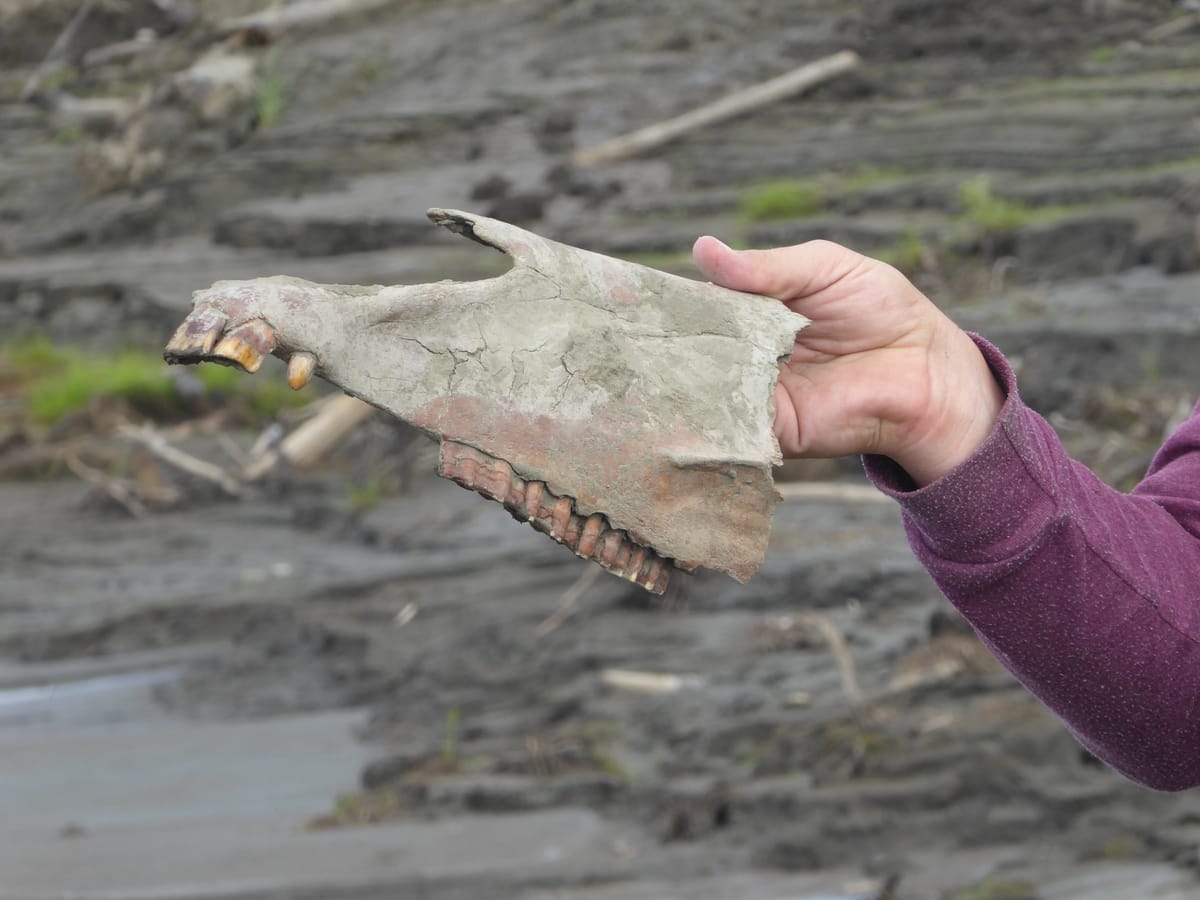
Should planet Earth enter an extreme hothouse state, the atmosphere will hold a lot more water vapor and weather will become more extreme and intense as we are now experiencing, and rainfall will become more frequent and intense. Weathering increases, so you have more carbon and minerals being flushed to the rivers, and transported to the deep sea and buried in sediments. When the process of carbon sequestration starts to outpace the volcanic activity's ability to replenish carbon in the atmosphere that cools the planet dragging the planet back to a more temperate climate from that hothouse state.
Conversely, if Planet Earth enters an extreme deep freeze, the opposite happens. The weather cycle basically halts. Rain becomes much less frequent, much less intense, weathering decreases. Now you have much less carbon sequestered and volcanic activity outpaces carbon sequestration, so you start to heat up the planet again with carbon accumulating in the atmosphere.
To what degree that this can actually regulate the planet's climate is still debated, but the basic processes that are part of the cycle are well-accepted.
How does this planetary thermostat affect life, or vice versa?
Plants, fungi, microbes, and animals have been intertwined with this process since life emerged. In Earth system science there’s this thinking that life is so intimately connected with this process that it is amplifying the thermostat’s ability to regulate the climate, because the presence of life dramatically accelerates the weathering of rock and the sequestration of carbon in the deep ocean. It's sort of juicing up the power of that thermostat.
What about the fragility of biodiversity? Specifically the biodiversity as we know it today
I would say more vulnerable in some ways now. We now need the planet to be in a much narrower set of conditions that supports our way of life, or we have to massively adapt our way of life.
Certainly compared to microbes, fungi, and plants, we're kind of, I don't want to say weaklings, but we are much more vulnerable. When mass crises happen, life tends to recede back to its most resilient, and often its earliest forms, which are microbes but also plants and fungi. The three of them have an incredible symbiotic relationship and are constantly surviving together.
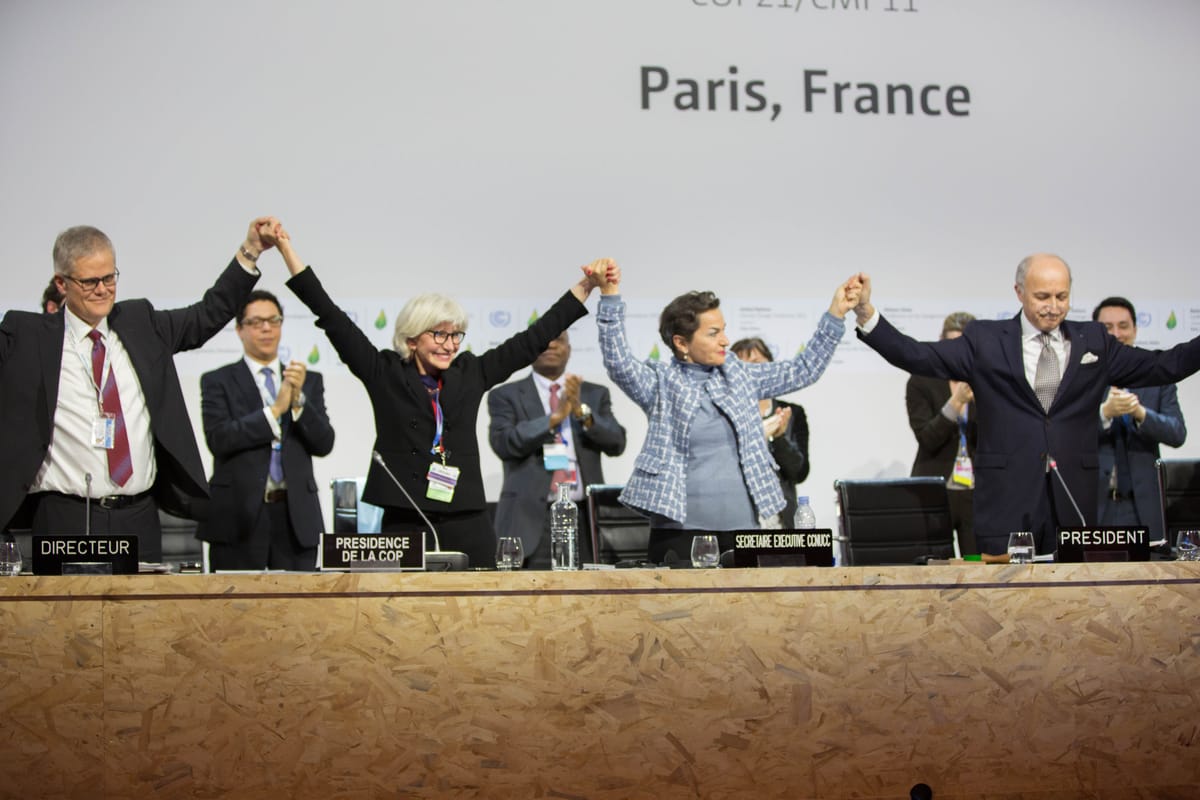
How does this change how you think about environmental policy?
This book is so focused on ecology and geology and biology, and because the scope is so large, human history is one part of it. That said, there is a massive difference between thinking of life inhabiting the planet — or being a passenger on Spaceship Earth — versus seeing life as continuous with the planet. I think that shift in thinking is hugely important. Not just for everybody's everyday understanding of the planet and our relationship to it, but obviously for policy. That anthem that we're hearing more and more is “We are Earth defending itself.” I feel like that is becoming not just a nice figure of speech, but literally scientifically true.
I see my book as just one component of what I genuinely think is a larger movement that is very swiftly emerging and is orbiting very similar ideas: The British nature writer Robert MacFarlane’s new book Is a River Alive looks at the history of animism, and personhood, and legal rights for rivers, mountains and ecosystems. The British evolutionary biologist and writer Olivia Judson has been working on a new theory of the coevolution of Earth and life. This fall. Peter Godfrey Smith, the writer and philosopher of science, has a new book coming out called Living on Earth partly about how life has transformed the planet, and continuing his exploration of the origins of consciousness and intelligence. British journalist Jonathan Watts has a new biography of James Lovelock [the chemist who co-developed the Gaia hypothesis, that living organisms interact synergistically with their inorganic surroundings]. And the evolutionary biologist W. Ford Doolittle, who was one of the harshest critics of Gaia when it first came out, has been working on a project he calls Darwinizing Gaia that tries to reconcile Gaia with modern Darwinian theory.
It all points to a resurgence of planetary-scale thinking and recognizing the agency of the non-human.


